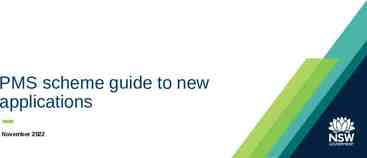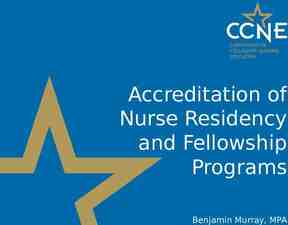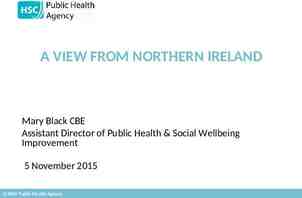Find the Right Teacher Evaluation System for Your School
45 Slides1.62 MB
Find the Right Teacher Evaluation System for Your School
2015 CCSA Mobile Conference App To Download & Launch the App: Search “confservices” in the app store on your device Open the app and enter event code: 2015 Set Up Your Account: Once you’ve completed the steps above, select “My Account” button to log into the app Enter your email address and the password “2015” to complete this step Note: Directions are also listed on pg. 3 of the printed program. Share Your Experience #CCSACon #OMMV
2015 CCSA Mobile App Session Evaluations Provide your feedback on all CCSA breakout sessions directly from the app: Select PROGRAM Button Under programming header tap the strand that corresponds to the session you want to evaluate Use the arrows on the top to make sure you’re on the correct date Scroll down until you find the session title When you are inside a session description, click on the “Complete Session Evaluation” link under the pink “Resources” header to complete a quick evaluation for that particular session. Thank You! Note: Directions are listed on the logistics button of the app. Share Your Experience #CCSACon #OMMV
Our Goal: You will leave today with ideas on how to improve your school’s evaluation and professional development process.
Who is the Nerdy Presenter? James Bushman Ed. D. Head of School at University High School. 30 years working in high school education as Teacher, Counselor, Curriculum Director, Principal. Adjunct Professor at Fresno State, teaching ‘Leadership’ and ‘Curriculum & Supervision.’
University High School, Fresno California
Process we will follow today Over the next 75 minutes I want to share my experiences with you and lead a discussion on this topic so that you leave today inspired to reflect on your school’s practice.
Problem: Teaching is Very Hard It requires many different skills:
So teacher evaluation and school-driven professional development matter. Yet, many schools do both of these things badly.
Because contacted teachers lack time (not enough non-teaching duty days in a contract), Districts try to make “teacher evaluation” serve as “professional development”
How many classroom teachers in this room felt the evaluation process you engaged in when you taught gave you good feedback that helped you to be a better teacher? Among veteran teachers the universal answer tends to be ‘Very Few’.
PD is supposed to be . . . Professional Development: Learning undergone by a teacher to improve professional practice.
But Professional Development Tends to be . . . Make-it-take-it Mentality Binder Syndrome
And Evaluation Tends To Be . . . Dog-and-Pony Show The Gauntlet Fear and Dread
Problem and Solution New teachers are not Master Teachers when they first enter a classroom. Yet schools do a poor job helping teachers BECOME Master teachers. Solution: We need better PD and better evaluation. How do we get there? Step 1: Separate PD from Teacher Evaluation
Why separate P.D. from T.E.? Because when a teacher is not sure if they are going to be retained or not, they are less likely to be open and reflective about their teaching. You don’t learn as much when you are afraid. So you create a school culture that values continuous improvement and you create a P.D. time that is seen as something different from the Evaluation.
So our first step is to try to separate the two functions. At UHS our Faculty Handbook delineates “evaluation from PD.” All teachers are evaluated each year in a process that takes place in the spring. Each summer/fall teachers are expected to engage in school directed Professional Development. PD is about formative growth, Evaluation is the summative reflection.
Step 2 to solving problem School leaders must make time to assess faculty needs that could be the basis of PD AND they need to spend time developing good site PD for their staff.
Planning Prof. Dev. at UHS 1. I use walkthroughs and observations to assess staff needs. I listen to staff and what they say. 2. I make a list of needs that we prioritize. 3. Then I (or a group of us) plan PD, much like a teacher plans a teaching unit, sometimes with multiple objectives. *I have not bought any program, our PD is homegrown.
Can teacher Professional Learning Communities (PLC’s) identify PD needs? Yes, but in my experience, not all of them. Our Leadership with this issue matters.
Does your school have time built into your calendar for professional development? At UHS we build into our calendar 5 days before the year begins, one full day at semester half days once a month and faculty meetings every 2 weeks.
Good Professional Development Hattie (Visible Learning, 2009) says 1. Occurs over time (avoid “one and done”) 2. Teachers must be engaged in ways that focus on improving student outcomes. PD is not necessarily Staff Development ‘so pick the right work”. 3. challenges teachers “prevailing discourse and conceptions about learning.” 4. Outside experts can really help, but leader should be engaged if this is done.
Remember: Not all PD is of equal value PD: Learning undergone by a teacher to improve their professional practice. Most effective when PD challenges teachers “prevailing discourse and conceptions about learning.” Hattie (I differentiate PD from “Staff development”)
What are examples of good PD topics you think you did at your school? Discuss with partners
Good PD ideas says Hattie 1) Observation of actual classroom methods; 2) microteaching (eg. Teach like a Champion); 3) video/audio feedback; and 4) practice. Theory is less useful than practice. Just because teachers know more, does not mean they will change their practice in ways that affect student learning.
Lesson from Hattie Ask yourself, when you are working with your teachers, are you doing work related to the issues that matter? At UHS we have had many school related initiatives NOT focused on classroom instruction (we all do this), but many good ones that were. Let me share some of these.
Video Taping Watching yourself teaching is very powerful, (the best thing my teachers have said they did). PD with video tape does not require special products or programs. At UHS we use video-taping and we did the following
Video-Taping at UHS 1. Bought video cameras (Samsung flip camera; now we have cell phone cameras). 2. Paired teachers; they videotaped each other, then scored each other with Danielson’s teacher rubric. 3. After teachers observed each other and watched each other on tape, they wrote reflections. 4. With video tapes, I did not have to coach my teachers, they coached themselves. 5. There are so many ways to use video cameras
Walkthroughs 1. Very effective for admin. to do these. 2. But also effective for teachers to accompany admin. on walkthroughs as a PD activity. 3. Protocols can vary. 4. Caused teachers to think about what they do with fresh eyes and generated lots of reflective thought.
Your thoughts? Thoughts on video-taping or Using Walkthroughs with teachers
Teacher evaluation changes If you can’t separate Teacher evaluation from Professional Development, and you want to use T.E. as a learning experience for teachers, consider re-designing your schools TE process so it is more effective at making teachers value it. What do we mean?
Definitions: Standard Evaluation Protocol Standard eval AKA “Clinical Supervision model” usually involves 3 key steps 1. Set up observation 2. Observe teacher 3. Sit-down post-conf
Based On 6 CSTP Standards
Change the method you use. Clinical Supervision Model to . WalkThrough Model Video Observation Model Multiple Measures Approach
Collect student feedback on Instruction. No matter what you do, Collect student feedback. Lots of examples produced by school districts around the country already exist. Google can help you find them.
Feedback Models
Feedback Models from Richmond City Public Schools (you can google it)
InIIninasdlkfl;adksjf In Richmond, it appears teachers give out the surveys, collect them, analyze them, and then fill out this form that they include as part of their evaluation.
UHS form I have used
UHS multiple methods Eval Information we will review 1. *Your observations about the year and your instruction 2. *State testing results/AP testing results 3. *Personal observations by Head of School 4. *Personal observations by staff (reaffirms that you must be team player and be nice to front office). 5. *Grade distribution for your classes 6. *Parent survey results 7. *Student survey results 8. *Last year’s commendations and recommendations
Summary: We Have a Problem to Fix As Charters we have more flexibility to create good PD/Eval systems. Steps to follow: 1. Separate PD from Teacher evaluation. 2. Make time, and make an effort, to work on your teachers capacity . (yes, I know you are busy). 3. Tinker with Eval if you can’t change the entire process. 4. Hire for talent and values vs. skills and knowledge. 5. Build a culture that supports improvement goals.
Questions
Thank you. Please fill out the online evaluation form Contact Info James Bushman Ed. D University High School Fresno [email protected] 559-278-8264


















































